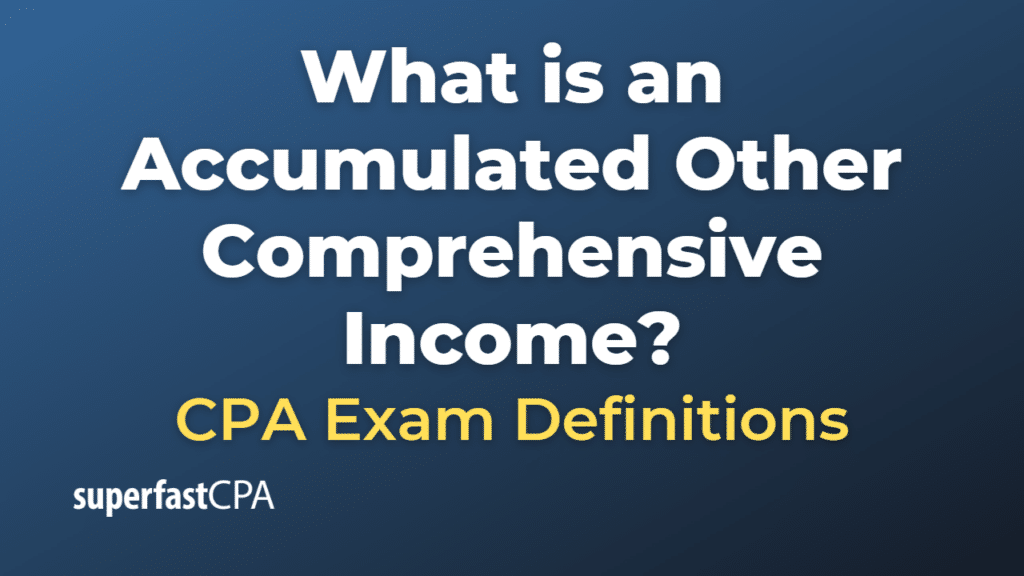Accumulated Other Comprehensive Income
Accumulated Other Comprehensive Income (AOCI) is a financial statement category within the equity section of a company’s balance sheet that captures unrealized gains and losses from specific financial transactions or events. These are gains and losses that have not yet been realized through the company’s regular operations and are not included in net income. Once the transactions or events are settled, the gains or losses are reclassified from AOCI to net income.
AOCI typically includes the following items:
- Unrealized gains and losses on available-for-sale securities: These are temporary fluctuations in the market value of investment securities that the company intends to hold but not actively trade.
- Foreign currency translation adjustments: These are the gains and losses resulting from translating the financial statements of a foreign subsidiary into the parent company’s reporting currency.
- Unrealized gains and losses on derivative financial instruments: These are temporary changes in the value of financial contracts used for hedging purposes (such as interest rate swaps, commodity futures, or foreign exchange contracts).
- Pension plan adjustments: These are the gains and losses related to a company’s defined benefit pension plan, such as changes in actuarial assumptions or experience adjustments.
AOCI provides insights into the financial performance of a company by showing the impact of specific events or transactions that are not included in the net income calculation. It helps investors and analysts to understand the total comprehensive income of the company, which includes both net income and other comprehensive income.
Example of Accumulated Other Comprehensive Income
Let’s take a look at an example of Accumulated Other Comprehensive Income (AOCI) in a hypothetical company’s balance sheet:
XYZ Corporation Balance Sheet (Partial) As of December 31, 2023
- Common stock: $1,000,000
- Retained earnings: $500,000
Accumulated Other Comprehensive Income (AOCI):
- Unrealized gain on available-for-sale securities: $20,000
- Foreign currency translation adjustment: -$10,000
- Unrealized gain on cash flow hedge: $5,000
- Pension plan adjustment: -$2,000
Total AOCI: $13,000
Total Stockholders’ Equity: $1,513,000
In this example, the XYZ Corporation’s balance sheet shows an Accumulated Other Comprehensive Income (AOCI) of $13,000. The AOCI consists of four components: unrealized gain on available-for-sale securities ($20,000), foreign currency translation adjustment (-$10,000), unrealized gain on cash flow hedge ($5,000), and pension plan adjustment (-$2,000). The sum of these components gives the total AOCI of $13,000.
The AOCI amount is included in the total stockholders’ equity, which is the sum of common stock ($1,000,000), retained earnings ($500,000), and AOCI ($13,000), resulting in a total stockholders’ equity of $1,513,000.












